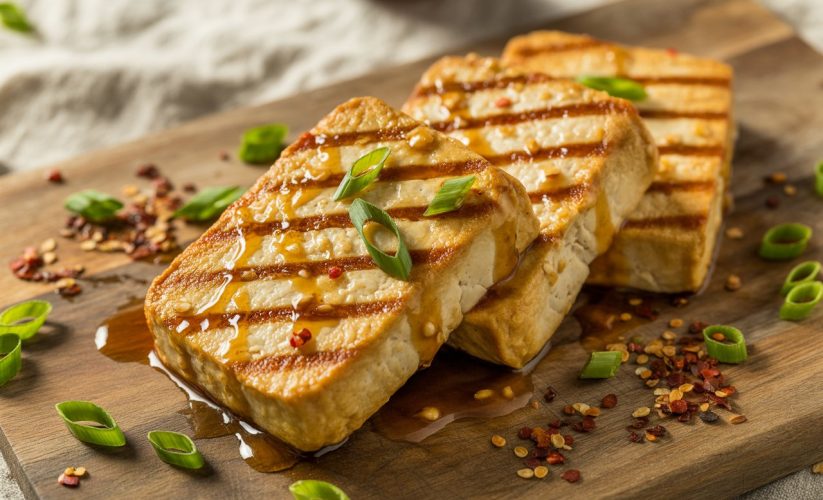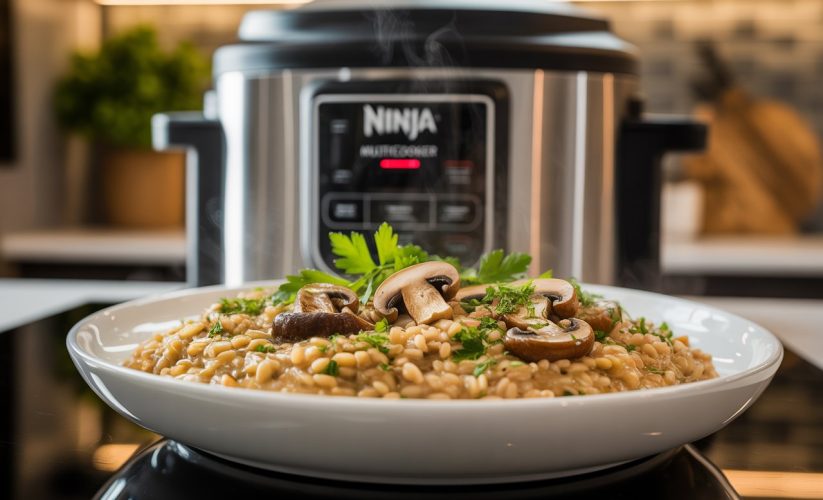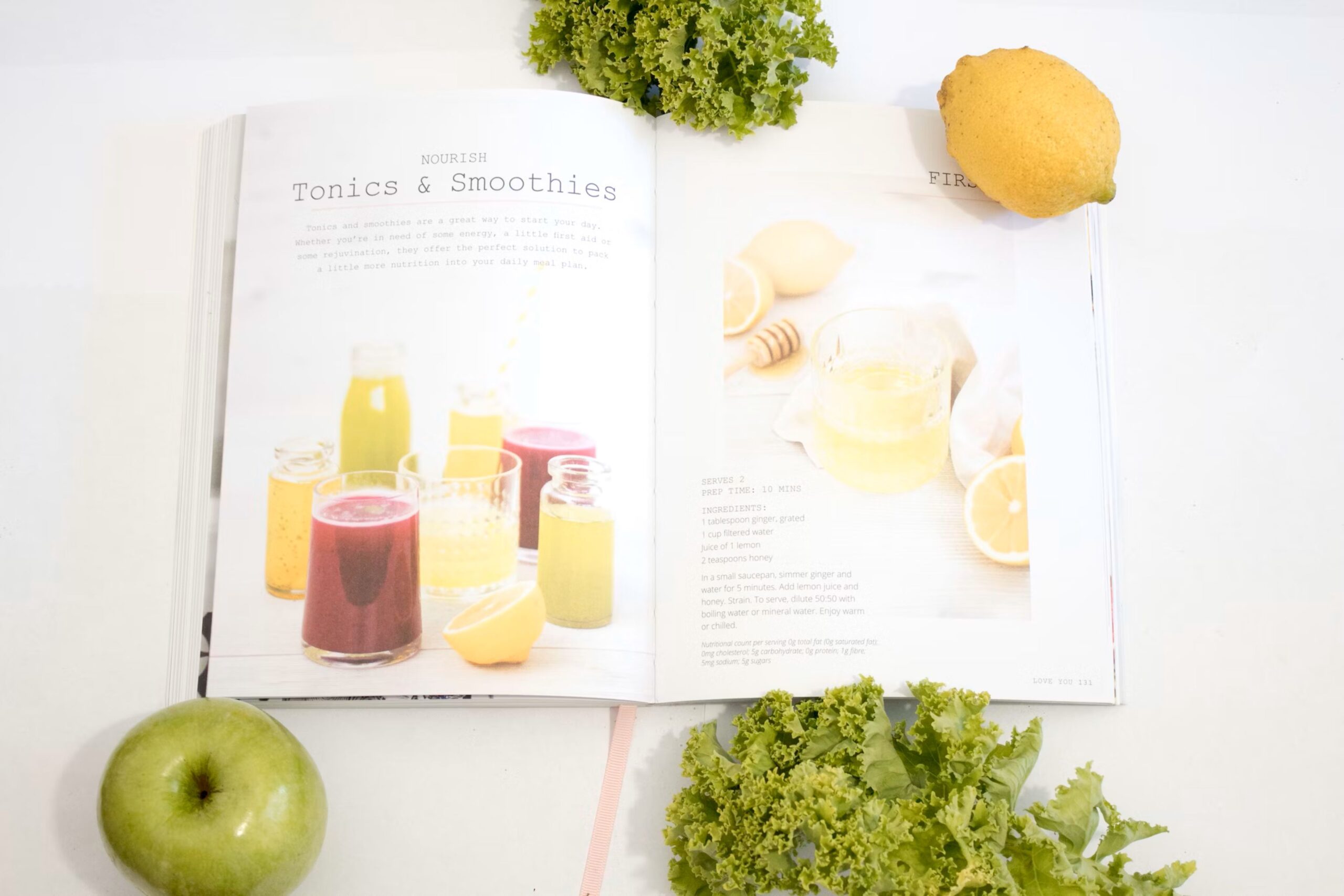
Ninja Air Fryer Crispy Tofu Steaks
The kitchen timer beeps, signaling that something extraordinary is about to happen. Inside the Ninja Air Fryer, tofu steaks are transforming from bland, spongy blocks into golden-brown masterpieces with perfectly crispy exteriors and tender, flavorful interiors. This moment represents a breakthrough for anyone who has ever struggled with cooking tofu—turning what was once a disappointing, mushy experiment into a protein-packed triumph that rivals any restaurant dish.
For those seeking healthier alternatives to traditional meat-based meals, the journey to perfect plant-based cooking can feel overwhelming. Tofu, despite its incredible nutritional profile and versatility, has earned an unfair reputation for being difficult to prepare properly. Too often, home cooks end up with rubbery, tasteless results that confirm their worst fears about plant-based eating. But the Ninja Air Fryer has revolutionized this experience, making it remarkably simple to achieve restaurant-quality crispy tofu steaks right at home.
“The air fryer has completely changed how I approach plant-based cooking. What used to take constant attention and multiple pans now happens almost automatically, with better results than I ever achieved before.”
— Plant-Based Cooking Magazine, 2024
Key Takeaways
- Perfect texture: The Ninja Air Fryer creates exceptionally crispy exteriors while maintaining tender, moist interiors in tofu steaks
- Time-efficient: Cooking tofu steaks takes only 15-20 minutes with minimal preparation time
- Healthier alternative: Air frying uses up to 75% less oil than traditional frying methods while delivering superior results
- Versatile preparation: Tofu steaks can be marinated, seasoned, or coated with various flavors to suit any cuisine
- Consistent results: The precise temperature control ensures perfectly cooked tofu every time
- AIR CRISP TECHNOLOGY: 400℉ superheated air surrounds food for hot, crispy results with little to no oil.
- LARGE CAPACITY: The 5-QT nonstick basket and crisper plate fit up to 4 lbs of French fries or 5 lbs of chicken wings.
- 4-in-1 FUNCTIONALITY: Air Fry, Roast, Reheat, and Dehydrate.
- ALL-IN-ONE SYSTEM: Includes the Ninja Crispi PowerPod, 4-qt and 6-cup CleanCrisp glass containers, and 2 storage lids
- CRISPI POWERPOD: The power of a full-sized air fryer now in the palm of your hand
- SMALL & LARGE BATCH CONTAINERS: 6-cup container cooks a personal sized meal in 7 mins while the 4 QT fits a 4-LB chicken and veggies
- DUALZONE TECHNOLOGY WITH SMART FINISH: Features two independent 4-quart baskets allowing simultaneous cooking of different foods with separate time and temperature controls, while Smart Finish synchronizes cooking to ensure both dishes complete at the same time for perfectly coordinated family meals
- VERSATILE 4-IN-1 FUNCTIONALITY: Master Air Fry, Roast, Reheat, and Dehydrate functions in one powerful 1690-watt appliance with precise temperature control ranging from 105°F to 400°F, delivering crispy exteriors and tender interiors with up to 75% less fat than traditional frying
- GENEROUS FAMILY-SIZE CAPACITY: 8-quart total capacity with two 4-quart baskets accommodates up to 4 pounds of food, perfect for cooking family-sized meals, entertaining guests, or meal prepping multiple dishes simultaneously without compromising on quality or taste
- DIGITAL CRISP CONTROL TECHNOLOGY: Precision-controlled temperature, heat source, and airflow for ultimate versatility and optimum cooking performance.
- 8-IN-1 VERSATILITY: The ultimate meal-making machine with 8-in-1 functionality: Air Fry, Air Roast, Air Broil, Bake, Bagel, Toast, Dehydrate, and Keep Warm all in one powerful, 1800-watt appliance. The height of the interior of this machine is approximately 3″.
- LESS FAT: Eat all of your air fried favorites guilt-free with up to 75% less fat when using the Air Fry function vs. traditional deep frying. Tested against hand-cut, deep fried French Fries.
The Transformation Journey: From Skeptic to Believer
The path to mastering crispy tofu steaks in the Ninja Air Fryer often begins with frustration. Many have attempted traditional pan-frying methods, standing over a hot stove while oil splatters, only to end up with unevenly cooked tofu that sticks to the pan and falls apart when flipped. The exterior might achieve some browning, but the interior remains bland and waterlogged. These disappointing experiences leave cooks questioning whether tofu is worth the effort.
Enter the Ninja Air Fryer—a game-changing appliance that addresses every common tofu-cooking challenge. The circulating hot air technology creates an environment similar to deep frying but without the excessive oil, mess, or health concerns. This revolutionary cooking method transforms tofu steaks from problematic to practically foolproof.
Understanding Why the Ninja Air Fryer Works So Well
The secret lies in how the Ninja Air Fryer manipulates moisture and heat. Tofu’s biggest enemy is its water content—that spongy texture that prevents proper browning and flavor absorption. Traditional cooking methods struggle to remove this moisture efficiently while simultaneously creating a crispy crust. The Ninja Air Fryer solves this problem through its powerful convection technology.
Hot air circulates rapidly around the tofu steaks at temperatures reaching 400°F, creating a Maillard reaction—the chemical process responsible for that coveted golden-brown crust and complex, savory flavors. Simultaneously, the constant air movement wicks away surface moisture, preventing sogginess and encouraging crispiness. The perforated basket allows steam to escape rather than condensing back onto the food, ensuring that every surface becomes beautifully crisp.
Mastering the Art of Preparation
Success with Ninja Air Fryer crispy tofu steaks begins long before the appliance is turned on. Proper preparation is the foundation of extraordinary results, and understanding each step transforms the cooking process from guesswork to guaranteed success.
Selecting the Right Tofu
Not all tofu is created equal when it comes to making steaks. Extra firm tofu is non-negotiable—its dense structure holds together during cooking and provides the meaty texture that makes tofu steaks so satisfying. Medium or soft tofu will crumble and cannot achieve the desired steak-like consistency. When shopping, look for packages that feel heavy and solid, indicating minimal water content and maximum protein density.
Organic, non-GMO tofu offers superior flavor and texture, though any high-quality extra firm variety will work. Fresh tofu from Asian markets often has better texture than supermarket brands, though modern grocery stores increasingly stock excellent options. The tofu should appear uniformly white without discoloration and smell clean and slightly sweet.
The Critical Pressing Process
Pressing tofu removes the excess water that prevents crisping and flavor absorption. This step cannot be rushed or skipped—it fundamentally changes the tofu’s structure. While a dedicated tofu press provides the most consistent results, several effective alternatives exist for those without this specialized equipment.
Remove the tofu from its package and drain the liquid. Place the block on a cutting board lined with paper towels or a clean kitchen towel. Cover the top with more towels, then place a heavy object on top—a cast-iron skillet, a pot filled with water, or even heavy books work well. The goal is steady, even pressure that forces water out without crushing the tofu.
Press for a minimum of 30 minutes, though an hour yields better results. For those planning ahead, pressing overnight in the refrigerator produces exceptionally dry tofu that crisps beautifully. The tofu should feel significantly firmer and appear noticeably smaller after pressing, with the surrounding towels thoroughly soaked.
Cutting for Optimal Results
How tofu is cut dramatically impacts the final texture and appearance. For genuine steak-like pieces, slice the pressed tofu block horizontally into planks approximately ¾ to 1 inch thick. This thickness ensures the interior stays tender while the exterior crisps, creating that desirable textural contrast.
Cutting too thin results in pieces that dry out completely, becoming tough and jerky-like. Too thick, and the interior won’t cook through properly before the exterior burns. The ¾-inch sweet spot provides the perfect balance. Each block of tofu typically yields 3-4 steaks, depending on the desired thickness and the block’s height.
For visual appeal and easier eating, trim the edges slightly to create cleaner rectangles. Some cooks prefer to score the surface lightly in a crosshatch pattern, which increases surface area for maximum crispiness and allows marinades to penetrate more effectively.
Elevating Flavor Through Marinades and Seasonings
Plain tofu steaks, while texturally perfect from the Ninja Air Fryer, need flavor enhancement to truly shine. This is where creativity and personal taste preferences take center stage. Tofu’s mild nature is actually its greatest strength—it acts as a blank canvas, readily absorbing whatever flavors are introduced.
Marinating Strategies
Marinating transforms tofu from bland to bold, infusing every bite with complex flavors. Unlike meat, tofu absorbs marinades quickly due to its porous structure. Even 30 minutes of marinating time produces noticeable results, though longer periods intensify the flavor.
Asian-inspired marinades consistently rank among the most popular for tofu steaks. A combination of soy sauce or tamari, rice vinegar, sesame oil, garlic, and ginger creates a savory umami base that complements tofu’s subtle sweetness. Adding a touch of maple syrup or brown sugar balances the saltiness and encourages caramelization during cooking.
For those seeking bolder flavors, barbecue-style marinades deliver impressive results. Tomato-based sauces with smoked paprika, liquid smoke, and a hint of molasses create a convincing smoky flavor profile. The natural sugars in these marinades caramelize beautifully in the high heat of the Ninja Air Fryer, developing a sticky, flavorful glaze.
Mediterranean options offer lighter, herb-forward alternatives. Olive oil, lemon juice, dried oregano, basil, and crushed red pepper flakes create bright, fresh flavors perfect for summer meals. Adding nutritional yeast contributes a subtle cheesy note while boosting nutritional value.
The marinating vessel matters too. Shallow dishes allow more surface contact between the marinade and tofu. Flip the steaks halfway through marinating time to ensure even coverage. For maximum efficiency, use a zip-top bag, which allows redistribution of marinade without additional dishes and takes up less refrigerator space.
Dry Seasoning Techniques
Not every preparation requires liquid marinades. Dry seasonings create different but equally delicious results, often producing even crispier exteriors. After pressing, pat the tofu steaks completely dry with paper towels—any remaining moisture will prevent seasonings from adhering properly.
A light coating of cornstarch or arrowroot powder before seasoning creates an ultra-crispy crust. This technique, borrowed from Asian cooking methods, forms a delicate, crunchy shell that shatters satisfyingly with each bite. The starch also helps seasonings stick more effectively.
Season generously—tofu needs more seasoning than meat due to its neutral flavor. Don’t be shy with salt, which enhances the tofu’s natural taste rather than overwhelming it. Freshly ground black pepper, garlic powder, onion powder, and smoked paprika create a versatile base that works with virtually any cuisine.
For adventurous palates, custom spice blends open endless possibilities. Everything bagel seasoning provides a trendy, flavorful coating. Cajun or Creole blends add southern-inspired heat. Za’atar offers Middle Eastern complexity, while curry powder brings warm, aromatic notes.
The Perfect Cooking Process
With preparation complete, attention turns to the actual cooking process in the Ninja Air Fryer. While the appliance does most of the work, understanding proper technique ensures consistently excellent results.
Temperature and Timing
Preheat the Ninja Air Fryer to 400°F for 3-5 minutes before adding the tofu steaks. Preheating ensures immediate crisping when the tofu hits the hot basket, rather than slowly warming up and potentially steaming. This initial blast of heat is crucial for developing that golden-brown crust.
Arrange the tofu steaks in a single layer in the air fryer basket, leaving space between each piece for proper air circulation. Overcrowding leads to uneven cooking and steaming rather than crisping. Depending on the Ninja Air Fryer model, this might mean cooking in batches, but the wait is worthwhile for superior results.
Cook for 15-20 minutes total, flipping halfway through. The exact timing depends on several factors: the tofu’s moisture content after pressing, the thickness of the steaks, and personal crispiness preferences. Start checking at the 12-minute mark to avoid overcooking.
Signs of perfectly cooked tofu steaks include deep golden-brown color on both sides, firm edges that resist gentle pressure, and a slight puffing effect as internal moisture converts to steam and escapes. The exterior should appear dry and slightly textured rather than wet or glistening.
The Flipping Technique
Flipping tofu steaks requires a gentle touch to avoid breaking these delicate pieces. Use silicone-tipped tongs or a thin metal spatula, sliding it completely under the steak before lifting. Support the entire piece rather than gripping it by the edges, which can crumble under pressure.
The halfway point is ideal for flipping—typically around 8-10 minutes into cooking. If the steaks stick slightly to the basket, wait another minute or two. Properly cooked tofu releases naturally once the crust fully develops. Forcing it too early tears the exterior and ruins that perfect crust.
For extra insurance against sticking, lightly spray the air fryer basket with oil before adding the tofu, even if the steaks were marinated in oil-based mixtures. This minimal addition doesn’t significantly impact health benefits but dramatically improves the cooking experience.
Achieving Extra Crispiness
For those who prefer maximum crunchiness, several techniques amplify the crisp factor. First, ensure the tofu is exceptionally dry before cooking—every drop of water that remains prevents crisping. Second, lightly spray or brush the tofu steaks with oil halfway through cooking, right before flipping. This additional fat encourages further browning and crispiness.
Extending the cooking time by 2-3 minutes also intensifies crispiness, though monitor closely to prevent burning. The line between perfectly crisp and overdone is thin. When in doubt, cook slightly less—tofu steaks can always return to the air fryer for additional crisping, but there’s no reversing burnt food.
Some cooks prefer a finishing step under the broiler for ultimate crispiness. After air frying, transfer the steaks to a baking sheet and broil for 1-2 minutes per side. This extra step creates an almost crackling-like exterior while maintaining the tender interior the air fryer developed.
Common Challenges and Solutions
Even with the Ninja Air Fryer’s user-friendly design, certain challenges occasionally arise. Understanding these potential issues and their solutions prevents frustration and ensures consistent success.
Problem: Tofu Sticks to the Basket
Sticking usually indicates insufficient oil or attempting to flip too early. While air frying requires minimal oil, a light coating—whether from marinade or a quick spray—is necessary. If sticking occurs, wait a bit longer before flipping. The tofu will naturally release once the crust fully forms.
Cleaning the basket thoroughly between uses prevents residue buildup that contributes to sticking. Even small amounts of carbonized food create problematic surfaces. For stubborn stuck-on tofu, soak the basket in warm, soapy water for 15 minutes before scrubbing.
Problem: Uneven Cooking
Uneven results stem from overcrowding or inconsistent tofu thickness. Always leave space between steaks for proper air circulation. When cutting, measure each piece to ensure uniform thickness—even small variations cause timing issues.
Different Ninja Air Fryer models have unique hot spots. Once these are identified through experience, arrange tofu accordingly. Rotating the basket 180 degrees halfway through cooking, along with flipping the steaks, helps overcome any uneven heat distribution.
Problem: Steaks Are Tough Rather Than Crispy
Toughness indicates overcooking—the tofu has dried out completely rather than achieving that desirable crispy-tender balance. Reduce cooking time by 2-3 minutes and check earlier. Remember that tofu continues cooking slightly after removal from the air fryer due to residual heat.
Pressing tofu too aggressively can also contribute to toughness by compressing the structure too much. Apply firm but not crushing pressure during the pressing process. The goal is removing water, not squeezing the tofu into a dense, compact mass.
Problem: Bland Flavor Despite Seasoning
If tofu tastes bland despite generous seasoning, the issue likely lies in timing or marinade penetration. For marinades, ensure at least 30 minutes of contact time, preferably longer. Consider scoring the tofu surface to create channels for flavor absorption.
For dry seasonings, remember that tofu needs more seasoning than meat. Don’t hold back—what seems like too much seasoning often proves perfect. Taste and adjust during the cooking process if possible, adding more seasoning after flipping if needed.
Serving and Presentation Ideas
Perfect tofu steaks deserve equally thoughtful presentation. How these protein-rich creations are served significantly impacts the overall dining experience, transforming a simple preparation into a memorable meal.
Building Complete Meals
Tofu steaks shine as the centerpiece of composed plates. Serve over grains like quinoa, brown rice, or cauliflower rice for a complete protein-and-carbohydrate combination. The grains absorb any flavorful juices or additional sauces, creating cohesive flavors throughout the dish.
Roasted or grilled vegetables provide colorful, nutritious accompaniments that complement rather than compete with the tofu’s flavors. Broccoli, Brussels sprouts, bell peppers, and zucchini all pair beautifully. Their natural sweetness and slight char echo the tofu’s caramelized edges.
Fresh salads offer lighter options, particularly for lunch or warm-weather meals. Mixed greens with sliced tofu steaks, cherry tomatoes, cucumber, avocado, and a tangy vinaigrette create satisfying bowls packed with texture and flavor contrasts. The crispy tofu adds substantial protein that makes salads truly filling.
Sauce Pairings
Sauces elevate tofu steaks from good to extraordinary. Peanut sauce brings rich, nutty depth with slight sweetness and heat—a classic pairing that never disappoints. The creamy texture contrasts beautifully with the crispy tofu exterior.
Tahini-based sauces offer Middle Eastern-inspired complexity. Blended tahini, lemon juice, garlic, and a touch of water creates a versatile drizzle that works with various seasoning profiles. Adding fresh herbs like parsley or cilantro brightens the flavors further.
Asian-inspired glazes made from reduced soy sauce, mirin, and honey create glossy, intensely flavored coatings. Brush these onto the tofu steaks during the last few minutes of air frying for caramelized perfection, or serve on the side for dipping.
Chimichurri provides herbaceous brightness that cuts through the tofu’s richness. The fresh, vibrant sauce made from parsley, oregano, garlic, vinegar, and olive oil adds Mediterranean flair while contributing beneficial nutrients and antioxidants.
Creative Applications Beyond the Plate
Tofu steaks aren’t limited to traditional plated presentations. Sliced thin, they make excellent sandwich proteins, rivaling deli meats in texture while offering superior nutrition. Layer on whole-grain bread with avocado, lettuce, tomato, and mustard for satisfying lunches.
Dice crispy tofu steaks for addition to grain bowls, creating textural variety and protein distribution throughout each bite. This approach works particularly well for meal prep, as the cubed tofu reheats more evenly than whole steaks.
Tofu steak tacos represent an innovative fusion approach. Break the steaks into smaller pieces, serve in warm tortillas with cabbage slaw, cilantro, lime, and hot sauce. The textural contrast between crispy tofu and crunchy vegetables creates exciting mouthfeel.
The Health and Lifestyle Benefits
Beyond culinary appeal, Ninja Air Fryer crispy tofu steaks offer substantial health advantages that align with various dietary approaches and wellness goals. Understanding these benefits provides additional motivation for incorporating this preparation into regular meal rotation.
Nutritional Advantages
Tofu stands out as a complete protein source, containing all nine essential amino acids the body cannot produce independently. Each serving provides approximately 10 grams of protein while remaining low in calories—typically around 100 calories per serving. This impressive protein-to-calorie ratio makes tofu steaks ideal for weight management and muscle maintenance.
The minimal fat content in tofu consists primarily of heart-healthy unsaturated fats, including omega-3 fatty acids that support cardiovascular health and reduce inflammation. Unlike animal proteins high in saturated fats, tofu contributes to cholesterol reduction rather than elevation.
Air frying further enhances tofu’s health profile by requiring minimal added fats. Traditional frying methods use significant amounts of oil that dramatically increase calorie and fat content. The Ninja Air Fryer achieves similar or superior crispiness with up to 75% less oil, preserving the tofu’s inherently healthy nature.
Tofu also provides impressive amounts of iron, calcium, and manganese—minerals essential for bone health, oxygen transport, and metabolic function. For those following plant-based diets, tofu steaks offer concentrated nutrition that helps meet daily requirements without relying on supplements.
Supporting Dietary Goals
The versatility of Ninja Air Fryer crispy tofu steaks accommodates virtually any dietary approach. For vegans and vegetarians, these steaks provide satisfying protein that rivals meat in texture and satiety. The substantial, meaty quality helps newcomers to plant-based eating transition more comfortably.
Those following low-carb or keto diets appreciate tofu’s minimal carbohydrate content—typically 2-3 grams per serving. Combined with high protein and moderate fat, tofu steaks fit perfectly within macronutrient targets without requiring complex calculations or modifications.
Gluten-free eaters embrace tofu as a safe, naturally gluten-free protein source. When using gluten-free tamari instead of traditional soy sauce and ensuring other ingredients meet dietary requirements, tofu steaks remain completely celiac-safe.
Individuals managing diabetes benefit from tofu’s low glycemic index, which prevents blood sugar spikes. The protein content further stabilizes blood glucose levels, making tofu steaks an excellent choice for maintaining steady energy throughout the day.
Time and Energy Efficiency
Modern life demands efficiency, and Ninja Air Fryer crispy tofu steaks deliver remarkably time-efficient meal solutions. Total hands-on time rarely exceeds 10 minutes—pressing happens passively, marinating requires only mixing and waiting, and the air fryer handles cooking independently.
Batch cooking becomes simple with this method. Prepare multiple blocks of tofu at once, storing cooked steaks in the refrigerator for up to five days. Reheating in the air fryer for 3-4 minutes restores crispiness, providing quick protein additions to various meals throughout the week.
The cleanup simplicity cannot be overstated. Unlike traditional frying that leaves oil-splattered stovetops and multiple greasy pans, air frying contains mess within a single basket that typically requires only a quick wash. Many Ninja Air Fryer baskets are dishwasher-safe, further reducing cleanup effort.
Energy consumption remains lower than conventional oven cooking. The concentrated cooking space and efficient heating elements use less electricity while cooking faster. For environmentally conscious cooks, this reduced energy footprint aligns with sustainability values.
Expanding Technique and Experimentation
Once the basic technique is mastered, experimentation opens exciting possibilities for customization and creativity. The foundational skills transfer seamlessly to countless variations, each offering unique flavors and experiences.
International Flavor Profiles
Exploring global cuisines through tofu steak preparations prevents monotony while expanding culinary knowledge. Indian-inspired versions use garam masala, turmeric, and curry leaves for warm, complex flavors. Serve with basmati rice and cucumber raita for a complete meal.
Japanese-style preparations embrace simplicity and quality ingredients. Marinate in a mixture of sake, mirin, and white miso for subtle umami depth. Serve with steamed rice, pickled vegetables, and miso soup for an authentic experience.
Mexican-influenced tofu steaks seasoned with cumin, chili powder, oregano, and lime juice bring vibrant, bold flavors. Top with fresh pico de gallo and serve with black beans and corn for a satisfying fiesta-style plate.
Italian variations using dried Italian herbs, balsamic vinegar, and sun-dried tomatoes create Mediterranean magic. Serve over pasta with marinara sauce or alongside caprese salad for Italian-inspired comfort food.
Texture Variations
While crispy exteriors represent the classic approach, varying textures creates different eating experiences. For softer steaks with less crunch, reduce temperature to 375°F and cook for slightly longer. This gentler approach creates tender results with light browning.
Creating a breaded coating adds extra crunch and visual appeal. Dip pressed tofu steaks in plant-based milk, then coat with seasoned breadcrumbs or panko before air frying. The result resembles chicken-fried steak in appearance and texture.
Stuffed tofu steaks represent an advanced technique that impresses dinner guests. Carefully slice a pocket into thick steaks, fill with spinach, mushrooms, or cashew cheese, then secure with toothpicks before cooking. The surprise filling creates restaurant-worthy presentations.
Seasonal Adaptations
Adjusting tofu steak preparations to complement seasonal ingredients keeps meals fresh and exciting year-round. Spring calls for light, herb-forward marinades paired with tender asparagus and peas. The bright, clean flavors celebrate the season’s renewal.
Summer welcomes bold, grilled-inspired flavors. Smoky barbecue seasonings paired with corn on the cob and tomato salads create perfect warm-weather meals. Serving cold tofu steaks sliced over chilled noodle salads offers refreshing alternatives for hot days.
Autumn embraces warming spices and heartier accompaniments. Apple cider-based marinades with cinnamon and sage create fall-appropriate flavors. Serve with roasted root vegetables and wild rice for cozy, satisfying dinners.
Winter demands rich, substantial preparations. Miso-glazed tofu steaks with roasted Brussels sprouts and creamy polenta provide comfort during cold months. The deeply savory flavors and warming qualities satisfy winter cravings.
Building Confidence and Community
The journey to mastering Ninja Air Fryer crispy tofu steaks extends beyond technical skill development. It represents entry into a vibrant community of plant-based cooking enthusiasts who share knowledge, inspiration, and support.
Overcoming Initial Doubts
Skepticism about tofu is common, especially among those raised on traditional meat-centered diets. Previous negative experiences with poorly prepared tofu create mental barriers that seem insurmountable. However, achieving success with just one batch of perfectly crispy tofu steaks often converts the most hardened skeptics.
Starting with high-quality ingredients and following proven techniques builds confidence quickly. That first bite into a golden-brown, crispy-yet-tender tofu steak often provokes genuine surprise—this actually tastes amazing. The textural satisfaction and flavor complexity challenge preconceptions about plant-based proteins.
Each successful batch reinforces growing expertise and encourages experimentation. What begins as carefully following recipes evolves into confident improvisation based on personal preferences and available ingredients. This progression from novice to competent cook happens remarkably quickly with air fryer methods.
Sharing the Experience
Cooking for others provides opportunities to showcase tofu’s potential and challenge their assumptions. Serving beautifully plated tofu steaks to dinner guests without initially revealing the protein source often results in enthusiastic reception followed by genuine surprise upon learning they’ve enjoyed tofu.
These moments become powerful tools for spreading plant-based eating awareness. When skeptical friends and family members genuinely enjoy tofu prepared well, their openness to plant-based options expands significantly. Each positive experience creates ripples, potentially influencing others’ dietary choices.
Social media platforms provide spaces for sharing tofu steak successes, connecting with like-minded cooks, and discovering new preparation ideas. Hashtags related to air fryer cooking and plant-based eating reveal thriving communities eager to support newcomers and celebrate achievements.
Local cooking clubs or plant-based meetups offer in-person connections with others on similar journeys. Sharing tips, troubleshooting challenges together, and inspiring each other creates supportive networks that sustain long-term dietary changes.
Sustainability and Ethical Considerations
Choosing tofu steaks over traditional meat carries implications beyond personal health, contributing to broader environmental and ethical goals that motivate many toward plant-based eating.
Environmental Impact
Tofu production requires significantly fewer resources than meat production. Water usage for soy-based proteins amounts to approximately 10% of that needed for beef production. Land requirements similarly favor plant proteins, with soybeans producing far more protein per acre than livestock.
Carbon emissions from tofu production measure dramatically lower than meat alternatives. The absence of methane-producing livestock and reduced transportation requirements for plant-based proteins contribute to smaller carbon footprints. For environmentally conscious eaters, these factors provide powerful motivation.
Choosing organic, locally-produced tofu when possible further reduces environmental impact. Supporting local producers minimizes transportation emissions while encouraging sustainable agriculture practices. Many small-scale tofu makers use traditional methods that honor both quality and environmental responsibility.
Ethical Eating Choices
For those motivated by animal welfare concerns, tofu steaks provide satisfying protein without contributing to industrial animal agriculture. The substantial, steak-like texture and proper preparation create meals that don’t feel like deprivation or compromise.
Understanding the ethical implications of food choices brings peace of mind and alignment between values and actions. Each meal featuring tofu steaks rather than meat represents a choice that reflects personal ethics while nourishing the body adequately.
The financial accessibility of tofu makes ethical eating more attainable for diverse socioeconomic groups. Unlike many specialty plant-based products that carry premium prices, tofu remains affordable and widely available, democratizing access to ethical protein sources.
Conclusion
The transformation of simple tofu blocks into crispy, flavorful steaks through the Ninja Air Fryer represents more than just a cooking technique—it symbolizes the accessibility and appeal of plant-based eating. What once seemed difficult, time-consuming, or disappointing becomes straightforward, quick, and genuinely delicious with the right approach and tools.
Every golden-brown, perfectly crispy tofu steak emerging from the air fryer proves that plant-based proteins can satisfy even the most demanding palates. The textural satisfaction rivals traditional steaks while offering superior health benefits and aligning with environmental and ethical values. This preparation method removes barriers that previously prevented many from embracing tofu as a regular protein source.
The journey continues beyond mastering basic technique. Experimentation with flavors, presentations, and applications keeps meals exciting while building culinary confidence. Sharing discoveries with others spreads awareness about tofu’s potential and contributes to broader shifts toward more sustainable, ethical eating patterns.
Whether motivated by health goals, environmental concerns, ethical considerations, or simply curiosity about new cooking methods, those who embrace Ninja Air Fryer crispy tofu steaks discover a versatile, satisfying addition to their meal rotation. The combination of superior taste, impressive nutrition, environmental benefits, and cooking simplicity creates a compelling case for making tofu steaks a regular feature at the table.
The path to perfect tofu steaks requires patience during the initial learning phase, but the rewards extend far beyond individual meals. Each perfectly crispy steak represents growing culinary competence, improved nutrition, reduced environmental impact, and the satisfaction of creating something genuinely delicious. This is more than cooking—it’s a gateway to a more conscious, healthful, and sustainable approach to eating that benefits both personal wellbeing and the broader world.
Frequently Asked Questions
How do I store leftover crispy tofu steaks?
Store cooked tofu steaks in an airtight container in the refrigerator for up to five days. To maintain crispiness when reheating, use the air fryer at 350°F for 3-4 minutes rather than microwaving, which makes them soggy. For longer storage, freeze cooked steaks for up to three months, though texture may slightly change upon thawing. Separate layers with parchment paper to prevent sticking.
Can I use silken tofu instead of extra firm for tofu steaks?
Silken tofu is not suitable for making tofu steaks as it’s too delicate and will fall apart during cooking. The high water content and soft structure cannot achieve the desired steak-like texture. Always use extra firm tofu, which holds its shape during pressing, marinating, and air frying. Medium-firm tofu may work in a pinch but won’t create as satisfying a texture.
Why is pressing tofu so important?
Pressing removes excess water that prevents both flavor absorption and proper crisping. Unpressed tofu contains so much moisture that it essentially steams in the air fryer rather than developing the desired golden-brown crust. Pressing also creates a firmer texture that better mimics meat, making the final product more satisfying. The drier the tofu before cooking, the crispier the results.
What’s the best way to add flavor to tofu steaks?
Marinating for at least 30 minutes (preferably longer) allows flavors to penetrate the tofu’s porous structure. Alternatively, press the tofu until very dry, coat with cornstarch, then season generously with dry spices. Both methods work well, with marinating providing deeper flavor and dry seasoning creating extra crispiness. Combining both approaches—marinating, then coating with cornstarch and additional seasonings—yields exceptional results.
Can I cook frozen tofu in the Ninja Air Fryer?
Freezing tofu actually changes its texture in interesting ways, creating a chewier, more meat-like consistency. However, tofu must be completely thawed before air frying. Thaw overnight in the refrigerator, then press as usual to remove excess moisture. Frozen-then-thawed tofu tends to be even more absorbent of marinades and seasonings, though the texture becomes spongier and less steak-like compared to fresh tofu.
Last update on 2025-10-20 / Affiliate links / Images from Amazon Product Advertising API
*We may earn a commission for purchases made using our links. Please see our disclosure to learn more.








